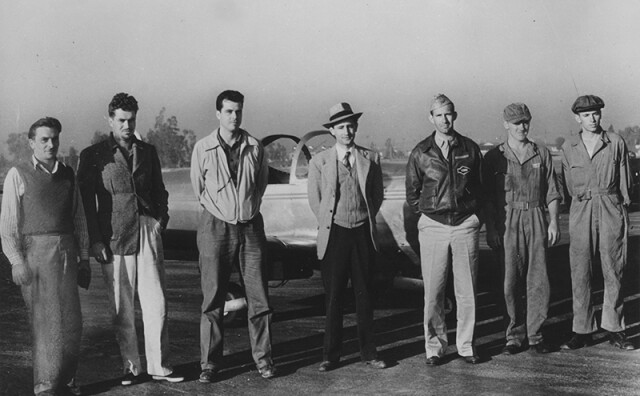Your Guide To The Manson Family Members — And Where They Are Now

-
This story was originally written by Juliet Bennett Rylah and published in 2017. It has been updated multiple times to reflect the status of various Manson family members. It was most recently updated July 11, 2023 with news that Leslie Van Houten had been paroled from prison after being denied parole more than 20 times.
-
Have a question? Ask us here.
Charles Manson was a troubled youth who, after spending more than half of his life in prison, finagled his way into becoming a guru in the California hippie scene. Those who joined his commune demonstrated utter devotion, ultimately agreeing to participate in what Manson called Helter Skelter, named after the Beatles track of the same name. Helter Skelter had very little to do with the song, however.
According to testimony from ex-followers, Manson intended to incite a race war by framing the Black Panthers for the murders of various wealthy, white people. He believed that once the race war began, he and his followers would hide until it had ended. He was certain Black people would win but wouldn't know how to govern themselves. That's when he would emerge and take over. His followers bought into it and agreed to commit acts of unparalleled barbarity on their leader's behalf. The group became known as the Manson Family.
Various members participated in two brutal and shocking murder scenes in the summer of 1969.

Just after midnight on Aug. 9, they broke into the home of actress Sharon Tate and filmmaker Roman Polanski at 10050 Cielo Drive in Benedict Canyon. (That property, now with the address 10066 Cielo Dr. and completely rebuilt, is currently on the market for $85 million.) Polanski was out of town. Tate, eight months pregnant, was enjoying the company of several friends, including hairdresser Jay Sebring, coffee heiress Abigail Folger and Folger's boyfriend, Wojciech Frykowski.
Every one of them was killed, as well as 18-year-old Stephen Parent, a friend of the home's caretaker. The Manson Family showed no mercy as Tate begged them to spare the life of her unborn child. The following night, a group of Manson followers broke into the Los Feliz home of supermarket executive Leno LaBianca and his wife Rosemary, killing them both.
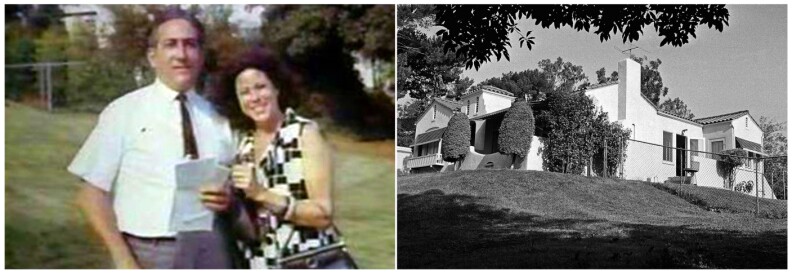
The Manson Family was also responsible for the death of musician Gary Hinman, which occurred in July 1969, and the death of stuntman Donald Shea in late August. Shea was a ranch hand at Spahn Ranch in Chatsworth, where the transient Manson Family had been known to crash.

Although Manson himself was not a proven participant in any of the murders, he was convicted on seven counts of first-degree murder for his role in orchestrating the Tate and LaBianca murders.
Manson's followers were in their late teens or early 20s when they encountered him, altering the course of their lives as well as those of their victims.
Charles Manson
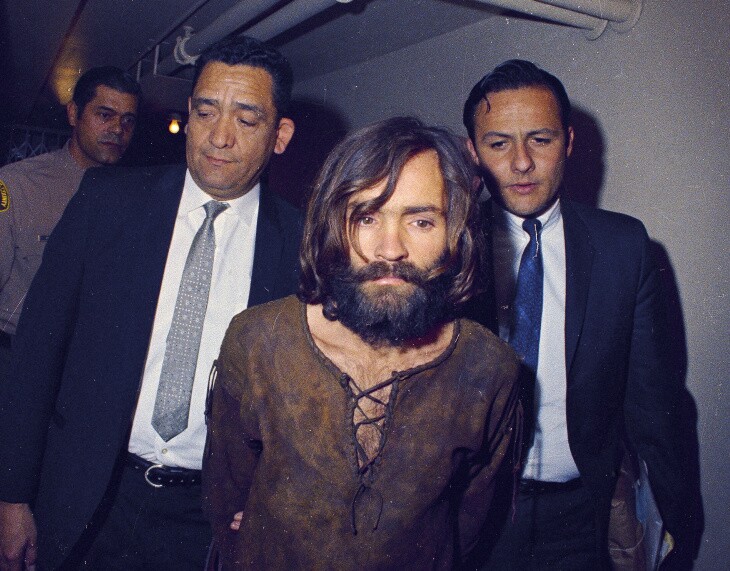
Charles Manson was born in 1934 to a teenage mother in Ohio who, by all accounts, never wanted him. He was prone to stealing and had spent most of his life in jail by the time he met Mary Brunner, essentially the first member of his "family," in Berkeley in 1967. He successfully recruited many people into his commune, although several of them were never directly involved in any of the murders and most would eventually move on or renounce him.
Jeff Guinn, who interviewed several of Manson's relatives about for his book, Manson: The Life and Times of Charles Manson, wrote that Manson was deceitful even as a child.
Little Charlie was a disagreeable child. Beyond his doting grandmother, who still recognized his many faults, few who knew him then or in his ensuing teenage years found much to admire about him beyond his looks. Charlie's dimpled smile could light up rooms, and his eyes were dark and expressive. But even at such a young age, he lied about everything and, when he got in trouble for telling fibs about breaking things or any of the other innumerable misdeeds he committed on a daily basis, Charlie always blamed somebody else. As a child, he was obsessed with being the center of attention. If he couldn't get noticed for doing something right, he was happy to misbehave. You couldn't relax when Charlie was around. It was only a matter of time before he got into some sort of trouble.
Manson was found guilty of seven counts of first-degree murder and sentenced to death in 1971. That sentence was commuted to life in prison in 1972, as was the case with all inmates who had been sentenced to death in the state of California at that time, after the state's Supreme Court ruled capital punishment unconstitutional. Prior to his death on Nov. 19, 2017, Manson had been serving his life sentence at Corcoran State Prison in Central California, where he'd been incarcerated since 1989. He was denied parole repeatedly over the years.
Not long before Manson's death, his grandson, Jason Freeman, told the L.A. Times: "Old age is setting in. Nature is taking its course. There will be a day where [Manson] doesn't wake up again," Freeman said.
Freeman is the son of Jay White, who was born Charles Manson, Jr. His mother was Manson's wife, Rosalie Willis, who Manson married in 1955, years before his cult leader days. White killed himself in 1993.
Manson was not a model prisoner, and was cited numerous times for contraband and other violations. In 1984, one of his fellow inmates lit him on fire after Manson allegedly threatened the man.
Not long before his death, Manson was engaged to a decades younger woman named Afton Burton, although the betrothal was, at one point, threatened by allegations that Burton only wanted him so that she could set up his corpse as a tourist attraction. Burton's mother called these allegations "tabloid crap" and asserted that the engagement was still on in an interview with Rolling Stone in February of 2015.
Bruce Davis

Bruce Davis grew up in the South, eventually moving to the West Coast in 1962. Prior to his involvement with the Manson Family, he worked for the Church of Scientology.
Bruce Davis was not involved in the Tate or LaBianca murders, but was convicted for his role in the murders of Gary Hinman and Donald Shea.
He is currently in prison at the California Men's Colony in San Luis Obispo where he acts as a minister in the prison chapel. He has also gotten married and fathered one child.
Like many other convicted Manson Family members, Davis has been recommended for parole multiple times only to have those recommendations reversed. In early 2016, Gov. Jerry Brown elected to block his release, saying, "As I've discussed twice before, Davis' own actions demonstrate that he had fully bought into the depraved Manson Family beliefs. He not only watched as Manson cut Mr. Hinman's face open with a sword, but held him at gunpoint while Manson was doing so."
The state parole board recommended Davis for release in June 2019 but Gov. Gavin Newsom reversed that decision. Davis was again recommended for parole in 2021 but Newsom also denied that request, saying Davis "currently poses an unreasonable danger to society if released from prison at this time."
Davis is now 80. After previously recommending seven times that he be paroled, a parole board on July 8, 2022 denied Davis parole, according state records. He is not scheduled for another hearing until 2025.
Leslie Van Houten

Leslie Van Houten grew up in a middle-class family in Altadena. Following the divorce of her parents when she was 14, Van Houten began using drugs. According to her testimony in her 2004 parole hearing, her mother forced her to have an abortion at 17, which deeply affected her relationship with her family. Still, she was a popular prom queen in high school, and she briefly attended classes to become a secretary. However, Van Houten favored the hippie lifestyle over school and dropped out. In 1968, she met Manson at a commune in Northern California and, at 19, joined his followers and began taking LSD.
On Aug. 9, 1969, Van Houten accompanied several other Manson members to the home of Leno and Rosemary LaBianca. Van Houten held Rosemary down as Charles "Tex" Watson stabbed her, then Van Houten took her turn. She has maintained that of the 47 stab wounds found on Rosemary's body, she only inflicted ones that occurred after Rosemary's death.
She was convicted of murder in 1971 and was sentenced to death but in 1972 her sentence was commuted to life in prison. Van Houten currently resides in the California Institution for Women in Corona, where she is considered a model prisoner. She has earned a bachelor's and a master's degree while incarcerated and leads self-help groups for other women in the prison. She has long since renounced Manson.
Van Houten has been up for parole more than 20 times. She was most recently recommended for parole on Nov. 9, 2021, which Gov. Gavin Newsom rejected in March 2022. Four previous recommendations also were rejected by California governors.
Then, in July 11, 2023, Van Houten was released from prison on parole.
A timeline of her path to parole:
In April 2016, the state parole board recommended Van Houten for parole. Sharon Tate's sister, Debra Tate, as well as L.A. County District Attorney Jackie Lacey advocated for Van Houten to remain in prison. Then Gov. Jerry Brown blocked her release, saying, "Both [Van Houten's] role in these extraordinarily brutal crimes and her inability to explain her willing participation in such horrific violence cannot be overlooked and lead me to believe she remains an unreasonable risk to society if released." On Sept. 20, 2019, a court of appeals refused to overturn former Brown's decision.
By then, Van Houten had been recommended for release again, in January 2019, only to stay behind bars when Newsom overruled a new parole recommendation in June 2019. A court declined to reverse Newsom's decision.
On July 23, 2020, the Associated Press reported a panel had once again recommended Van Houten for parole, the fourth time in four years. In November 2020, Newsom denied the recommendation for parole. In February 2022, the California Supreme Court declined to hear Van Houten's appeal of a previous Newsom decision.
On November 9, 2021, a California parole panel recommended for the fifth time that Van Houten be freed from prison. Governor Newsom rejected that recommendation later that month. On March 29, 2022, Newsom rejected the most recent parole recommendation. In November 2022, Van Houten waived her right to a hearing for a year. Her next hearing is now set for May 2024.
On May 30, 2023 a state appeals court ruled 2-1 to overturn Newsom's move to block parole for Van Houten, saying she is eligible for release.
In a 67-page ruling, the court disagreed with Newsom's rationale for denying the parole board's decision to release Van Houten, saying in part:
In his reversal decision, the Governor found inadequate Van Houten’s explanation of how she fell under Manson’s influence and engaged in her life crimes. The Governor further found that recent statements Van Houten made were inconsistent with statements she made at the time of the killings, indicating “gaps in Ms. Van Houten’s insight or candor, or both.” Finally, although Van Houten’s most recent criminal risk assessment found her at low risk for violent recidivism, the Governor found several “historical factors” identified in that assessment “remain salient” to Van Houten’s current dangerousness, such as her prior acts of violence, traumatic experiences, and substance abuse.
We review the Governor’s decision under the highly deferential “some evidence” standard, in which even a modicum of evidence is sufficient to uphold the reversal. Even so, we hold on this record, there is no evidence to support the Governor’s conclusions.
Van Houten provided extensive explanation as to the causative factors leading to her involvement with Manson and commission of the murders, and the record does not support a conclusion that there are hidden factors for which Van Houten has failed to account. The Governor’s refusal to accept Van Houten’s explanation amounts to unsupported intuition. The Governor’s finding of inconsistencies between Van Houten’s statements now and at the time of the murders fails to account for the decades of therapy, self-help programming, and reflection Van Houten has undergone in the past 50 years. The historical factors identified in the criminal risk assessment are the sort of immutable circumstances our Supreme Court has held cannot support a finding of current dangerousness when there is extensive evidence of rehabilitation and other strong indicators of parole suitability, all of which Van Houten has demonstrated.
On July 7, 2023, Newsom's office said the governor will not try again to block recommended parole for Van Houten, who is now 73.
A statement released by Erin Mellon, Newsom's communications director, said:
More than 50 years after the Manson cult committed these brutal offenses, the victims' families still feel the impact, as do all Californians. Governor Newsom reversed Ms. Van Houten’s parole grant three times since taking office and defended against her challenges of those decisions in court.
The Governor is disappointed by the Court of Appeal’s decision to release Ms. Van Houten but will not pursue further action as efforts to further appeal are unlikely to succeed. The California Supreme Court accepts appeals in very few cases, and generally does not select cases based on this type of fact-specific determination.
The statement also attached the ruling.
She had been incarcerated at the California Institution for Women in Corona, since August 1978, according to state prison records. A search for her name on the prison inmate database on the afternoon of her release returned the following message: "No records found matching that criteria."
Van Houten left the prison in the morning and is now in a halfway house.
Charles "Tex" Watson

Charles "Tex" Watson was arguably the most vicious member of the Manson Family. Manson may have orchestrated the killings, but Watson was, more often than not, the hand that carried them out. He participated in the Cielo Drive murders, personally shooting Steven Parent and Jay Sebring, and assisted in the other slayings. He was also active in the LaBianca murders.
Watson grew up in Texas, hence his nickname. In the 1960s, he worked for Braniff Airlines as a baggage handler. This gave him access to free airline tickets, which he used to visit an old college friend in Los Angeles. He eventually decided to move to the L.A. area in 1967. According to his 2011 parole hearing, Watson was renting a house in Malibu with a friend. He one day picked up a hitchhiker who turned out to be Beach Boys' drummer Dennis Wilson. Wilson invited Watson to his home, where he met Charles Manson and ultimately joined Manson's followers.
Watson was sentenced to death in 1971, which was commuted to life in prison the following year. He is currently an inmate of Mule Creek State Prison in Ione, near Sacramento.
Since his incarceration, he has converted to Christianity and became an ordained minister in 1981. He also released an autobiography titled Will You Die For Me? (1978) and earned a B.S. in business management in 2009. In 1979, he married Kristin Joan Svege, with whom he fathered four children via conjugal visits. The state of California got rid of those visits for prisoners serving life sentences in the late 1990s. At the time, Sharon Tate's mother, Doris Tate, was one of the biggest advocates for eliminating such visits for violent felons. She was enraged that Watson murdered her daughter and grandchild, yet was allowed to father children of his own. Svege amicably divorced Watson in 2003.
Watson apparently reads his Wikipedia page and seems to have submitted requests to have it edited. In those requests, he named Manson prosecutor Vincent Bugliosi's book Helter Skelter as his preferred source for Manson-related research. He was most recently eligible for parole in October 2016. He was denied for the 17th time in 47 years.
"These were some of the most horrific crimes in California history, and we believe [Watson] continues to exhibit a lack of remorse and remains a public safety risk," L.A. County District Attorney Jackie Lacey said in a statement. Sharon Tate's sister Debra Tate also spoke out, calling him a sociopath who is "incapable of having insight or empathy for anything."
Watson is currently 77. He was denied parole at a hearing on Oct. 15, 2021 and isn't eligible again until October 2026.
Patricia Krenwinkel

Patricia Krenwinkel grew up in Los Angeles as the quiet daughter of an insurance salesman and a stay-at-home mom. While living with her sister in Manhattan Beach in 1967, she met Manson and became enamored with him. She joined his commune and traveled with him for several months. In 1969, at age 21, she was a devoted follower who agreed to participate in Manson's plans for Helter Skelter.
Krenwinkel was present for the murders on Cielo Drive. In particular, she testified that she was the one to murder Abigail Folger. She first stabbed her in the living room of the house, then chased her outside and stabbed her several more times. According to Women Criminals: An Encyclopedia of People and Issues, Krenwinkel said she felt nothing when she killed her. "Nothing, I mean, what is there to describe? It was just there, and it was right." She also participated in the LaBianca murders the following night, assisting Van Houten and Watson in the murder of Rosemary. Krenwinkel has admitted to stabbing Leno with a fork and writing "DEATH TO PIGS" on the wall of their home with the LaBiancas' blood.
In 1971, she was sentenced to death but in 1972, her sentence was commuted to life in prison. She is currently held at the California Institution for Women in Chino, where she apparently goes by "Krenny." She has earned a bachelor's degree in human services and is involved with various prison programs. She, too, has renounced Manson.
Krenwinkel has been denied parole at least 10 times and had withdrawn from consideration or stipulated unsuitability two other times, according to prison records. In 2016, her parole attempt was delayed by her lawyers' assertion that she was suffering from "intimate partner battery" at the time of her crimes, a legal defense that has been used to free individuals who suffered abuse at the hands of romantic partners or family members. In 2017, parole board commissioners once again denied Krenwinkel parole.
On May 26, 2022, Krenwinkel was approved for parole. Five months later on Oct. 14, Gov. Gavin Newsom reversed that decision. She is now 75 and next scheduled for a parole hearing this November.
Susan Atkins

Susan Atkins was born in San Gabriel and grew up in San Jose. Her mother died of cancer when Atkins was 15, and her father fell into alcoholism following his wife's death. By 1967, Atkins had been abandoned by her father and was living in Los Banos, working as a waitress and attending high school while attempting to care for her little brother. She dropped out during her junior year of high school and relocated to San Francisco. There, she encountered Manson while he was playing guitar and soon accepted his invitation to join his commune. Within the Manson family, she went by the name Sadie Mae Glutz. Manson prosecutor and Helter Skelter author Vincent Bugliosi once said that excluding Manson himself, it was Atkins who had the "most unfortunate background."
On July 25, 1969, Atkins went with several followers, including Bobby Beausoleil and Mary Brunner, to the home of musician Gary Hinman, who Manson believed had money he could give them. They attacked Hinman and Manson sliced Hinman's ear with a sword. When the others left, Atkins and Brunner remained with Hinman and treated his wounds. Two days later, Beausoleil returned and murdered Hinman while Atkins and Brunner were present. They wrote "political piggy" on Hinman's living room wall in his blood.
Atkins was also present on the night of the Cielo Drive murders and used Tate's blood to write "PIG" on the front door of the home. She was present the night of the LaBianca murders as well, but stayed in the car.
While in jail on unrelated charges in October 1969, she boasted to two other inmates about how she had murdered actress Sharon Tate. These inmates informed authorities of her story, which helped the detectives working the case. Atkins later agreed to testify against the others, admitting in court that she held Tate down as Watson stabbed her. She said that she told Tate that she had no mercy for her, as Tate begged for her and her baby's lives.
Atkins was sentenced to death in 1971, which was, like the others' sentences, commuted to life in 1972. She renounced Manson and became a born-again Christian. She also married twice while incarcerated. In 1981, she married Donald Lee Laisure, who had been married at least two dozen times before. The marriage lasted less than a year. She remarried attorney James W. Whitehouse in 1987, who represented her at her 2000 and 2005 parole hearings. They remained married to her until she died.
In 2008, Atkins was diagnosed with brain cancer. As she was dying, she requested compassionate release but she was denied by the California Board of Parole. Atkins died in September 2009 at age 61, after spending 38 years at the California Institution for Women in Chino. At the time of her death, she was the longest-serving female inmate in the state of California. After she died, that dubious honor went to Krenwinkel.
Atkins was survived by one son, who had been born prior to the 1969 murders. She named the boy Zezozose Zadfrack Glutz. Her parental rights were terminated after she was imprisoned. Her family members declined to care for him so he was adopted and renamed. Atkins never saw him again. His whereabouts are currently unknown. It is believed that a Manson commune member named Bruce White was the boy's father.
Bobby Beausoleil
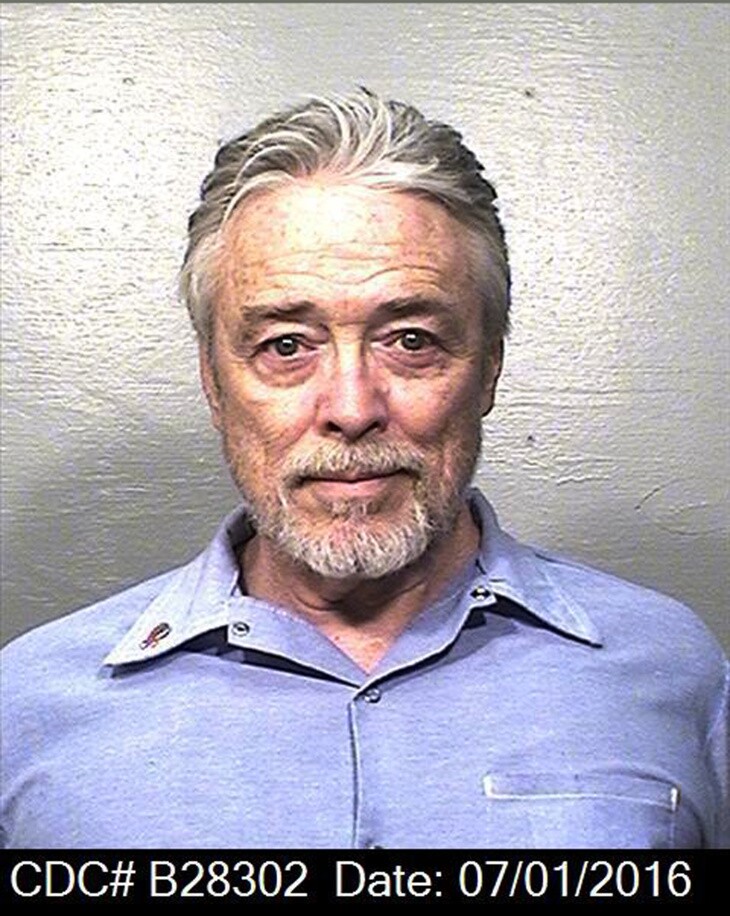
Bobby Beausoleil grew up in Santa Barbara. He was involved with several bands and appeared in various films, including Kenneth Anger's Lucifer Rising and Mondo Hollywood. He also appeared in a soft porn/Western film with Manson follower Catherine Share that was shot at the Spahn Ranch and titled Ramrodder. Beausoleil once lived with musician Gary Hinman, who the Manson Family would murder in July 1969.
Beausoleil was convicted of Hinman's murder and sentenced to death in 1970, a sentence that was commuted, just like the rest, in 1972. He is currently being held at the California Medical Facility in Vacaville and was most recently denied parole in April 2019. He had another parole hearing on Jan. 28, 2022 where he was denied release for another three years. He is 75.
Beausoleil has continued to make music in jail, providing the soundtrack to Lucifer Rising, as well as releasing two instrumental albums. Beausoleil was not Anger's first choice for composer. The score was to be composed by Led Zeppelin's Jimmy Page but Anger and Page had a falling out. (Another Manson follower, Lynette Fromme, would also have an encounter with Page, sort of. She once tried desperately to contact him about a premonition she had regarding some future disaster she foresaw for him.)
Anger writes about how he made the occult film here.
Steve "Clem" Grogan

Steve Grogan grew up in Chatsworth and dropped out of Simi Valley High School during his junior year. He eventually found himself doing various odd jobs at Spahn Ranch where he befriended ranch hand and movie stuntman Donald Shea. Grogan, 17, was already at Spahn Ranch by the time Manson and company arrived in 1968. They referred to Grogan as "Scramblehead," because they thought he wasn't very intelligent. According to some reports, Grogan was the one who allegedly crashed Beach Boy Dennis Wilson's Ferrari.
Grogan did not participate in either the Tate or the LaBianca murders. On the night of the LaBianca murders, Grogan set out with several Family members, but was sent by Manson to kill an actor fellow Family member Linda Kasabian had recently met. Kasabian intentionally led the group to the wrong house and they did not kill anyone that night.
Grogan did, however, participate along with Bruce Davis and Charles Manson in the murder of Shea in late August 1969. In 1971, Grogan was convicted of first degree murder for the crime. Grogan was initially sentenced to death but his sentence was commuted to life in prison.
In the mid-1970s, while doing time at Vacaville State Prison, Grogan got married and fathered two sons. He eventually helped authorities recover Shea's remains and in 1985, he was paroled — making him one of the few Manson followers to be released from prison.
Grogan has reportedly had no run-ins with the law since his release and lives in the Northern California Bay Area where he plays music with various bands.
Lynette "Squeaky" Fromme

Lynette "Squeaky" Fromme was born in Santa Monica. Her dad was an aeronautical engineer and her mom was a housewife. As a child, she was a member of a popular dance troupe. When Fromme was in high school, her family moved to Redondo Beach, where Fromme began experimenting with drugs. She graduated high school and briefly enrolled in college. She dropped out after approximately two months. After a falling out with her family, she became homeless. In 1967, a directionless Fromme met Manson in Venice, soon joining him, Brunner and Atkins at Spahn Ranch. The ranch's owner, George Spahn, began calling her "Squeaky" due to the noises she supposedly made when touched.
Fromme did not participate in any of the Manson murders but she remained devoted to the Family after their arrest. She lingered outside the courthouse and carved an "X" in her forehead, just as her accused companions did.
After the trials, Fromme moved to Sacramento, where she avoided yet another murder conviction. She and four others were arrested for the murders of James and Lauren Willett. The other four, including Aryan Brotherhood members Michael Monfort and James Craig, confessed and Fromme was the only one of them to avoid charges.
Fromme finally found herself behind bars in the mid-'70s. On Sept. 5, 1975, when she was 26, she pulled a gun and aimed it at President Gerald R. Ford. She was quickly disarmed by Secret Service agent Larry Buendorf and arrested. Although the gun did not have a round in the chamber and her lawyers argued that she had no intention of killing Ford, she was convicted of the attempted assassination of the president and sentenced to life in prison.
Unlike her more murderous family members, she was not a model prisoner. She attacked another inmate at the Federal Correctional Institution in Dublin, California with a hammer, and briefly escaped Federal Prison Camp in Alderson, West Virginia in an attempt to reunite with Manson. She also remained devoted to him, even after his other followers had renounced him.
In 2009, at 60, Fromme was paroled and relocated to a small town in Oneida County, New York.
Linda Kasabian
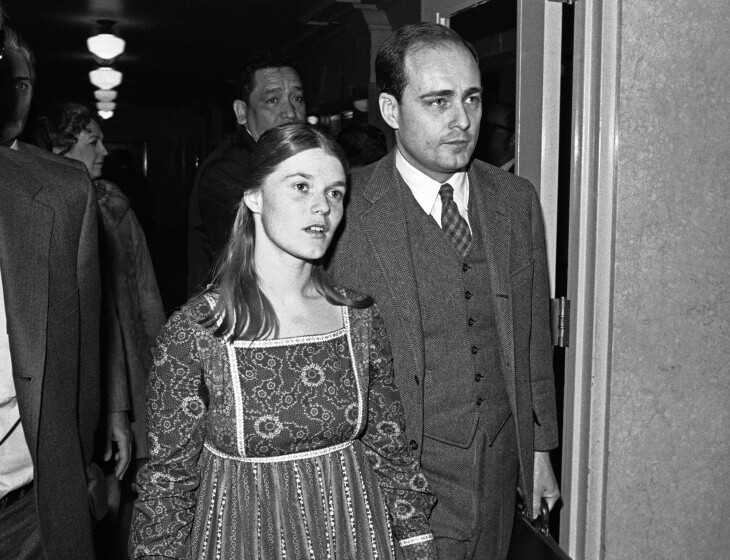
Linda Kasabian grew up in New England, dropped out of high school and drifted around the country. She married twice and had a baby girl, Tanya, with her second husband, Robert Kasabian. It was Robert who would lead Linda to Los Angeles, inviting her to come live with him following a brief split during which she had gone to live with her mother in New Hampshire. Together, she and Robert lived in the hippie communes of Topanga Canyon. After Robert left Linda behind to go on a trip to South America, she became friends with Catherine Share, who invited her to join the commune on Spahn Ranch.
Kasabian quickly became a part of the group and often accompanied the Manson family members on what Manson called "creepy crawls," in which they would break into homes and loot them while their owners slept.
Because Kasabian was the only family member with a driver's license, that became her role in the killings. She overheard the slaughter going on in the house on Cielo Drive and said she got out of the car and began running toward the house, hoping she could stop them. She testified she saw Wojciech Frykowski exit the house.

"There was a man just coming out of the door and he had blood all over his face and he was standing by a post, and we looked into each other's eyes for a minute, and I said, 'Oh, God, I am so sorry. Please make it stop.' And then he just fell to the ground into the bushes. And then [Atkins] came running out of the house, and I said, 'Sadie, please make it stop.' And then I said, 'I hear people coming.' And she said, 'It is too late.' And then she told me that she left her knife and she couldn't find it, and I believe she started to run back into the house. While this was going on, the man had gotten up, and I saw Tex on top of him, hitting him on the head and stabbing him, and the man was struggling, and then I saw [Krenwinkel] in the background with [Abigail Folger], chasing after her with an upraised knife, and I just turned and ran to the car down at the bottom of the hill," Kasabian said. (Note: Sadie was Susan Atkins' nickname in the Manson family.)
The next night, Kasabian accompanied group members to the LaBianca home but did not go inside. Manson then asked Kasabian to take the rest of them to the home of Saladin Nader, an actor Kasabian and Manson member Sandra Good had recently met. Kasabian was supposed to knock on the door of Nader's house and, when he answered, Atkins and Grogan were to kill him. However, Kasabian instead went to the wrong apartment. They did not kill the occupant of that apartment.
Two days later, Kasabian and her daughter left the Manson family and returned to New Hampshire. Kasabian later turned herself in and agreed to testify against the others in exchange for immunity, becoming the prosecution's key witness.
Bugliosi believed that Kasabian would have testified even without immunity.
"She never asked for immunity from prosecution, but we gave it," he said. "She stood in the witness box for 17 or 18 days and never broke down, despite the incredible pressure she was under. I doubt we would have convicted Manson without her."
Post murders, Kasabian tried to live a quiet life with her children. When she appeared in her rare interviews, she used a disguise.
She has reportedly died in Washington state at the age of 73, according to accounts in TMZ, Washington Post and L.A. Times, citing reviews of her death certificate. The news sites said she was listed in the death notices in The News Tribune of Tacoma under the name Linda Chiochios. That listing gives the date of her death as Jan. 21, 2023.
Mary Brunner
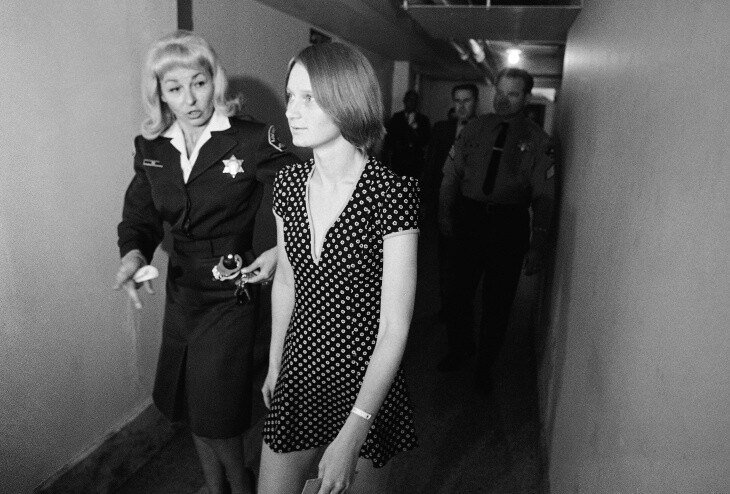
Mary Brunner was an early Manson devotee, and the mother of one of his sons. She grew up in Wisconsin, but met Manson in Berkeley, where she worked as a library assistant at the University of California. It was a chance encounter that occurred while taking her dog for a walk. The pair hit if off and Manson moved into her apartment. He would later convince her to allow other women to move in, a portent for the "family" he intended to build. The couple had a son, Valentine Michael, in 1968. Brunner ended up settling with Manson and the rest of his followers at Spahn Ranch.
Brunner accompanied Beausoleil and Atkins to the home of Hinman but was not convicted of his murder. Instead, she received immunity for testifying against the others. On Aug. 8, hours before the Cielo Drive murders, Brunner and follower Sandra Good were arrested for using stolen credit cards.
Brunner was arrested in 1971 after participating in the heist of a Hawthorne surplus store with several other followers, including Catherine Share. She was released in 1977, changed her name and has since gone on to live a quiet, reclusive life, reportedly in the Midwest. Brunner and Manson's son was raised by his maternal grandparents. According to Bugliosi's Helter Skelter:
Valentine Michael ("Pooh Bear"), the son of Manson and Mary Brunner, was raised by Mary's parents in Eau Claire, Wisconsin. Until the third grade, he did not know who his father was and believed his mother to be his older sister. In 1993, Michael told a reporter who tracked him down that he had never visited Manson "nor do I have any desire to see him. He's just some evil person I have nothing to do with."
Sandra Good
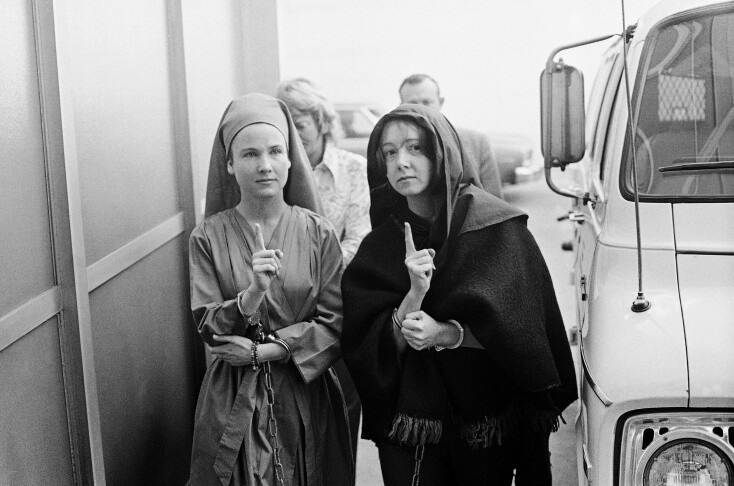
San Diego native Sandra Good linked up with Manson in 1968 and lived with the family on Spahn Ranch. She did not participate in the Tate/LaBianca murders, as she and Brunner had been arrested on Aug. 8 for using stolen credit cards.
She remained loyal to Manson for many years. In 1975, she and follower Susan Murphy were arrested for sending nearly 200 hostile letters to various corporate executives. According to Helter Skelter, the letters "threatened named corporate executives and U.S. government officials with death if they did not forthwith stop polluting the air and water and destroying the environment." Good represented herself in court and was sentenced to 15 years although she would only serve 10.
After she was released in 1985, she continued her infatuation with Manson. Because she was not allowed to return to California as a condition of her parole, she instead moved to Vermont where she took an assumed name. When her parole ended, she uprooted her life and move to Hanford, California to be closer to Manson, despite being denied visiting privileges.
At least until 2006, Good was still a loyal supporter, calling into talk shows to claim Manson's innocence. It is not clear where Good lives now. She is 79.
Paul Watkins

Paul Watkins was a drifter who met Charles Manson at a house in Topanga Canyon in the spring of 1968. Watkins would testify that on New Year's Eve of that year, Manson gathered the family together to tell them about Helter Skelter. Watkins did not maintain his devotion to Manson as much as the others and did not participate in any of the murders. He was in Death Valley when the Tate/LaBianca murders were committed. Watkins was, however, key in testifying to the impetus for the Manson Family's crimes, and told investigators about Helter Skelter. (You can read his testimony here.)
Watkins continued to renounce Manson after the trial. He settled in Tecopa, near Death Valley. He founded the Death Valley Chamber of Commerce, married twice and had two children. One of his daughters, author Claire Vaye Watkins, has written about the impact her father's legacy had on her life. Watkins died in 1990 of leukemia, when Claire was a child.
I was 10 years old when I read that my father was "a good-looking youth with a way with women, had been Manson's chief procurer of young girls". My sister came home from school crying because some kid had been teasing her. His taunt was that our father was a murderer for Charles Manson. We didn't know about Charlie yet, but for me the words "Charles Manson" had somehow already been imbued with evil. When our mother came home from work, we asked her about it and she said, "Yes, he was in the Manson Family. And no, he didn't kill anyone." She pointed us to Helter Skelter, which had been on a bookshelf in our family room all along. My sister found him in the index:
Watkins, Paul, 311, 313, 316-32, 335, 343, 366, 373-74, 384, 388, 391, 440, 465, 479, 481, 485, 498, 502, 512, 513, 551, 590, 599, 603, 610, 630, 642, 664-65
Lise skimmed his entries and, satisfied that our father had not killed anyone, we went on with our lives. It wasn't traumatic. It wasn't a moment of revelation. Our father was still dead and we were still left with a scrim of memories so thin we sometimes had no memories at all.
Have a question?
Van Houten was convicted for her role in the fatal stabbings of Leno and Rosemary LaBianca at their Los Feliz home. 2019 marked the the 50th anniversary of the Manson Family's two-night killing spree.
-
Restored with care, the 120-year-old movie theater is now ready for its closeup.
-
Councilmember Traci Park, who introduced the motion, said if the council failed to act on Friday, the home could be lost as early as the afternoon.
-
Hurricane Hilary is poised to dump several inches of rain on L.A. this weekend. It could also go down in history as the first tropical storm to make landfall here since 1939.
-
Shop owners got 30-day notices to vacate this week but said the new owners reached out to extend that another 30 days. This comes after its weekly swap meet permanently shut down earlier this month.
-
A local history about the extraordinary lives of a generation of female daredevils.
-
LAist's new podcast LA Made: Blood Sweat & Rockets explores the history of Pasadena's Jet Propulsion Lab, co-founder Jack Parsons' interest in the occult and the creepy local lore of Devil's Gate Dam.









